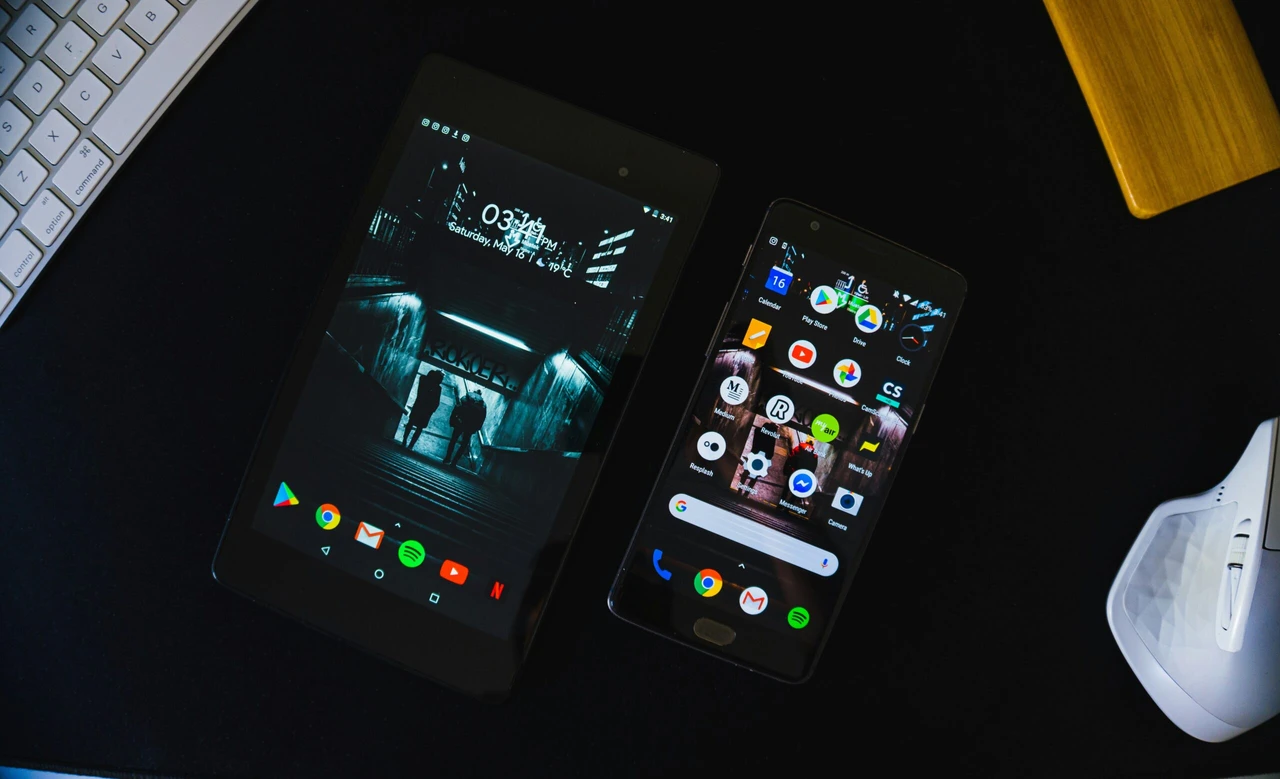SHARE
Flutter vs Dart: Key Differences Explained

Contents
Contents
With the app development sector expected to demonstrate a robust annual growth rate of 8.83%, resulting in a market volume of $673.80 billion by 2027, the importance of choosing the right programming language and framework is crucial. Amidst this flourishing landscape, the decision between Dart and Flutter for your mobile app development endeavors carries significant weight.
In this article, we will explore the features and differences between Flutter and Dart, exploring their unique features and differences. By examining their purpose, learning curve, performance, flexibility, and community support, you’ll gain a comprehensive understanding of these tools and be better equipped to make an informed decision for your mobile app development needs.
Key Takeaways:
- Flutter is an open-source UI SDK that allows for cross-platform app development and offers features like hot reload.
- Dart is an open-source client-side programming language used for developing Flutter apps and supports object-oriented programming principles.
- Dart and Flutter have distinct purposes and cater to different needs in mobile app development.
What is Flutter?
Flutter is an open-source UI SDK developed by Google and is amongst the top 4 app development frameworks available today. It provides mobile app developers with a powerful framework for creating cross-platform mobile apps for Android and iOS using a single codebase. With its extensive range of pre-built widgets and convenient features like hot reload, Flutter simplifies and accelerates the app development process. Its ease of use makes it a popular choice for mobile app developers looking to build cross-platform apps.
Some popular apps built with Flutter include Google Ads, Groupon, and The New York Times.
Key Features of Flutter
- Fast Development: Flutter offers hot reload functionality, allowing developers to see changes instantly without restarting the app, resulting in faster development.
- Expressive UI: With a rich set of customizable widgets, Flutter enables developers to create visually appealing and highly interactive user interfaces, facilitating the implementation of intricate designs and animations.
- Single Codebase: Flutter allows developers to write code once and deploy it across multiple platforms, including iOS, Android, web, and desktop, thereby reducing development time and effort while ensuring consistent user experiences across devices.
- High Performance: Flutter’s architecture is designed for high performance, leveraging the Dart programming language and a modern reactive framework to deliver smooth 60fps experiences, even on less powerful devices.
- Native Performance: By compiling Flutter code directly to native machine code, Flutter apps achieve near-native performance, providing users with responsive and fluid experiences without sacrificing development efficiency.
- Platform Integration: Flutter provides seamless integration with platform-specific features and APIs, allowing developers to access device sensors, services, and capabilities, and ensuring native-like experiences tailored to each platform.
What is Dart?
Dart is an open-source client-side programming language developed by Google. It’s a popular programming language with 45,914 currently live websites using Dart. It is a general-purpose language that can be used for web development, server-side programming, and mobile app development.
Dart is also the programming language used to develop Flutter. It is known for being easy to learn, performance-efficient, and supports object-oriented programming principles.
Key Features of Dart
- Easy to Learn: Dart is designed to be easy for developers to learn, especially if you have experience with other programming languages.
- Performance: Dart is optimized for performance, allowing you to build fast and responsive applications.
- Client-Side Programming Language: Dart can be used for client-side programming, enabling you to build interactive user interfaces for web applications.
- Fast Execution: Dart is optimized for fast execution, with a just-in-time (JIT) compiler during development and an ahead-of-time (AOT) compiler for production, resulting in efficient performance and quick startup times for applications.
- Object-Oriented Design: Dart is an object-oriented programming language with support for classes, inheritance, mixins, and interfaces, allowing developers to organize code into reusable and modular components, enhancing code readability and maintainability.
- Tooling Support: Dart comes with a comprehensive set of development tools, including a package manager (pub), a static analyzer (dartanalyzer), and a debugger, along with robust IDE support in editors like Visual Studio Code and IntelliJ IDEA.
- Cross-Platform Compatibility: Dart supports cross-platform development, enabling developers to write code that can run on various platforms, including web browsers, mobile devices (via Flutter), and servers, maximizing code reuse and developer productivity.
Differences Between Dart and Flutter
While both Dart and Flutter are products of Google and are used for mobile app development, they serve different purposes and have distinct characteristics. Here are the key differences between Dart and Flutter:
1. Purpose
Dart is a general-purpose programming language designed for web development, server-side programming, and mobile app development. It can be used beyond just app development, making it flexible for various purposes. On the other hand, Flutter is a cross-platform UI framework tailored explicitly` for creating beautiful and performant mobile applications for both iOS and Android.
2. Learning Curve
In terms of the learning curve, Dart is relatively easy to grasp, especially for developers familiar with object-oriented programming languages. It offers a clean syntax and has similarities to languages like Java and JavaScript. Meanwhile, Flutter has a steeper learning curve due to its unique architecture and widget-based approach. However, once you understand the fundamentals, Flutter’s hot reload feature can greatly aid in speeding up development time.
3. Performance
Performance is a critical aspect to consider when choosing between Dart and Flutter. Dart is known for its high-performance execution and has a just-in-time (JIT) compiler which enables faster code execution during the development phase. On the other hand, Flutter uses an ahead-of-time (AOT) compiler which produces highly optimized machine code, resulting in smooth and native-like app performance.
4. Flexibility
Dart provides developers with greater flexibility as it can be used in a variety of scenarios, including web development and server-side programming. It also has a vast ecosystem of packages and libraries available. In contrast, Flutter is primarily focused on mobile app development and is specifically built for creating beautiful cross-platform UIs. While it offers some web support, its core focus remains on mobile applications.
5. Community Support
Community support is crucial when working with any programming language or framework. Dart was the fastest-growing language community in 2023, expanding its community by roughly 33%. Flutter, on the other hand, has also gained significant popularity (150k stars on GitHub) and has a thriving community that actively contributes to its development. Both Dart and Flutter benefit from Google’s support and continuous improvement.
|
Criteria |
Dart |
Flutter |
|
Purpose |
General-purpose programming language for web, server-side, and mobile app development |
Cross-platform UI framework for creating mobile applications |
|
Learning Curve |
Relatively easy, especially for developers familiar with object-oriented programming languages |
Steeper due to unique architecture and widget-based approach |
|
Performance |
High-performance execution with a just-in-time (JIT) compiler |
Smooth and native-like performance with ahead-of-time (AOT) compiler |
|
Flexibility |
Can be used for various purposes beyond app development, with a vast ecosystem of packages and libraries available |
Primarily focused on mobile app development, with some web support |
|
Community Support |
Growing community with active presence on platforms like GitHub and developer forums |
Thriving community with continuous support and contributions |
Conclusion
Both Dart and Flutter have their unique advantages when it comes to mobile app development. The choice between the two depends on your specific needs and requirements.
If you are looking for cross-platform app development with high performance, Flutter is an excellent choice. With its open-source UI SDK and the ability to use a single codebase to create mobile apps for both iOS and Android, Flutter offers a streamlined development process. The hot reload feature allows developers to see changes instantly, making the development process faster and more efficient.
On the other hand, if you require a more general-purpose programming language for various applications, Dart may be the better option. Dart is an object-oriented programming language that not only powers Flutter but can also be used for web development and server-side programming. It is known for its ease of learning and performance efficiency.
When choosing between Dart and Flutter for your mobile app development projects, carefully consider your project’s requirements, resources, and the goals you want to achieve. By evaluating these factors, you can make an informed decision and choose the right technology that will best serve your needs.
If you’d like help leveraging the capabilities of Flutter for your mobile app development project, read more about Flatirons’ Flutter app development services.
Frequently Asked Questions
What is the difference between Flutter and Dart?
Flutter is a framework for building user interfaces, while Dart is a programming language used to write the code for Flutter applications.
How does Dart language contribute to Flutter development?
Dart is the primary language used in Flutter development. It is a type-safe programming language that allows for efficient app development on the Flutter platform.
What is the relationship between Flutter and the Dart language?
Flutter uses Dart as its programming language. The Flutter framework is built with Dart and developers use Dart to write the code for Flutter applications.
Can Flutter apps run on both Android and iOS devices?
Yes, Flutter apps are compiled into native code that can run on both Android and iOS devices, making cross-platform development more accessible for developers.
Why is Dart considered a fast application development platform?
Dart is known for being a type-safe programming language that enables faster development cycles. When coupled with the Flutter framework, developers can create high-performance apps efficiently.
How does Flutter SDK improve the development process?
Flutter SDK provides development tools and libraries that streamline the app development process. It offers a rich set of features to help developers create interactive UIs for their applications.
What makes the Flutter framework different from other UI SDKs?
Flutter framework is an open-source UI SDK specifically designed for building natively compiled applications. It allows for the creation of aesthetically pleasing and performant user interfaces.
Flutter App Development Experts
Create visually stunning and functionally robust apps with Flatirons Development1 Flutter development services.
Get the CEO's Take
Handpicked tech insights and trends from our CEO.
Flutter App Development Experts
Create visually stunning and functionally robust apps with Flatirons Development1 Flutter development services.
Get the CEO's Take
Handpicked tech insights and trends from our CEO.

Enterprise Computing: Transforming Business Operations
Flatirons
Oct 09, 2025
Explore the Top Embedded Systems Examples of Today
Flatirons
Oct 04, 2025
Best Manual Testing Tools to Boost Your Software Quality
Flatirons
Sep 28, 2025
Digital Product Development: Enhance Your Business Offerings
Flatirons
Sep 12, 2025
React SEO: Optimize Your React Apps for Search Engines
Flatirons
Sep 07, 2025
Will Software Engineers Be Replaced by AI?
Flatirons
Aug 31, 2025